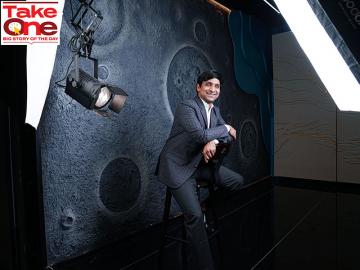
Will The First Indian Billionaire Sign The Giving Pledge In 2012?
In response to Warren Buffett and Bill Gatesís initiative, many billionaires, including Facebook founders Mark Zuckerberg and Dustin Moskovitz, have committed to donate the majority of their wealth. Will Indiaís rich follow suit?
On March 24, 2011, two significant events took place. In the first, millions of Indians sat glued to their televisions as India beat Australia to enter the semi-finals of the cricket World Cup. Sitting in the crowd at the Ahmedabad stadium were many of India’s richest businessmen and celebrities. Less than 1,000 km away, in Delhi, the world’s second and third richest persons, Bill Gates and Warren Buffett, respectively, were meeting about 50 of India’s leading philanthropists in a ‘Giving Discussion’. Gates and Buffett are the initiators of the Giving Pledge in the US, asking billionaires to commit to giving a majority of their wealth to philanthropy. Buffett has committed to giving away 99 percent of his wealth during his lifetime.
So, has the time come for India to adopt the Giving Pledge? With 57 billionaires and two names in the world’s top-10 rich list, the question is not ‘if’ but ‘when’ will India see its first signatory to the Giving Pledge. We have a 400 million-strong middle class and 150,000 HNIs [high net worth individuals, with an investible surplus of a million dollars].
In India, the debate has moved from ‘Why should I give?’ to ‘Who should I give to?’ and ‘What should I give to?’
However, the question that begs to be asked is, ‘Are we giving enough?’ A recent report by Bain Consulting said that, on an average, HNIs are giving 2-3 percent of their income. This is way below American HNIs, who give 8-11 percent of their income to charity. At this level of wealth, all of one’s basic needs are taken care of. Yet there is reluctance to give. Among billionaires, the reluctance is more.
There are exceptions. Last year, Azim Premji made the single largest philanthropic gift in India in recent memory — a share transfer of $2 billion to the Azim Premji Foundation. Given that his personal wealth is estimated to be $18 billion, this is 10 percent of his net worth.
But this did not happen in one day. Premji travelled extensively to organisations and places where actual work is being done, from Mumbai’s slums to the interiors of Andhra Pradesh. He spent time understanding the landscape before making this contribution. Today, he is not only giving money but also 15 percent of his time to philanthropy.
Earlier this year, G.M. Rao pledged Rs. 1,540 crore — nearly his entire personal stake in this business — towards the GMR Varalakshmi Foundation, which works on education. Last year, Shiv Nadar gave Rs. 580 crore to the Shiv Nadar Foundation, which works in the area of education. But these are far and few in a country with one of the highest growth rates of billionaires and millionaires in the world.
So, who is giving and who is not? People who have made their own money are much more comfortable giving it away compared to the second and third generations. Some of the older businesses, built during licence raj, have grown with a lot of insecurity. The businesses often depended on permits and resources controlled by the government, which could deny them any of this. In contrast, the new billionaires — represented by the IT entrepreneurs — are far less insecure about their business and are far more willing to share their wealth.
However, we need people to give because they want to and not because they are pressured to. That is when true and significant giving will happen.
Among many second and third generation entrepreneurs, the argument very often is, ‘We pay our taxes. It is the government’s job to look after society.’ That would be true if they all really paid their taxes. Some of the largest Indian companies came into the tax net just a decade ago, with the introduction of the Minimum Alternate Tax, which was introduced to tax companies with high revenues, high profits, high dividends but no tax liability.
We see lobbies trying to get exemptions for their sectors or factories. I would not be surprised if the marginal tax rate for most of the top companies would be less than 20 percent.
There are also some disturbing trends. We see individuals claiming CSR [corporate social responsibility] as their personal philanthropy because they hold a large stake in the company. CSR ties back in to the work of the company, as indeed it must, since its purpose is profit maximisation for shareholders. The principle used is that if any shareholder wants to engage in their own philanthropy, they should be free to do so.
If we mandate CSR, it will be bypassed in various ways, such as providing housing, schools and benefits for employees. These are great activities but are ways to retain employees, not help society. Another trend that needs to be nipped in the bud is companies using money from employees towards CSR agendas and bragging about it as if it was their own money. All of this will actually shake people’s confidence in philanthropy.
But, I am confident that a slow and steady change is already taking place. We need more philanthropists to come out and talk about it, to help others give. So, when Kalpana Morparia speaks of her Rs. 1.5 crore donation to Bharti Foundation, it inspires many others. Rakesh Jhunjhunwala saying that he plans to pledge one-fourth of his wealth to charity, makes it more possible for many others who are still thinking about it. They become role models.
So, I will not be surprised if an Indian signs the Giving Pledge in 2012. But what matters most is not whether people sign a pledge or not, but what they actually do. What matters is that our people start giving.
Dhaval Udani is CEO of GiveIndia, a platform that provides donors a choice of 200 NGOs that have been screened for transparency and credibility.
(As told to Cuckoo Paul)
(This story appears in the 06 January, 2012 issue of Forbes India. To visit our Archives, click here.)















